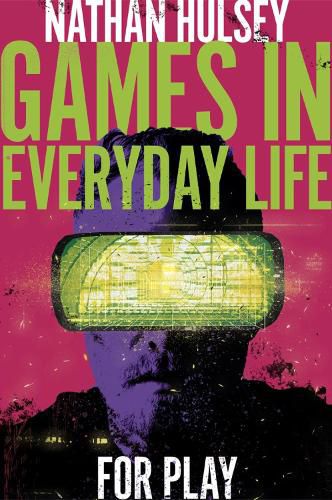Readings Newsletter
Become a Readings Member to make your shopping experience even easier.
Sign in or sign up for free!
You’re not far away from qualifying for FREE standard shipping within Australia
You’ve qualified for FREE standard shipping within Australia
The cart is loading…






In this book, Nathan Hulsey explores the links between game design, surveillance, computation, and the emerging technologies that impact our everyday lives at home, at work, and with our family and friends.
The book delves into the role of gamification in motivating us to use software and applications, alter our behaviors, and to collect, display, and contextualize personal data. The author utilizes historical examples of pre-gamified technologies and techniques to explore gamification’s growing effect on environments, bodies, and spaces. Reimagining gamification as a surveillance-oriented ideology that eschews traditional disciplinary techniques of control, he argues that gamification uses seduction, in the forms of game mechanics, to encourage people to submit their data in a strategy that utilizes play to promote social, economic and behavioral change. He asks:
What are the consequences of leveraging play as a mode of control?
What are the outcomes using of addictive design to influence our perception of work and play?
As we become more reliant on the digital, will we all become players in an infinite game? If so, who wins?
$9.00 standard shipping within Australia
FREE standard shipping within Australia for orders over $100.00
Express & International shipping calculated at checkout
In this book, Nathan Hulsey explores the links between game design, surveillance, computation, and the emerging technologies that impact our everyday lives at home, at work, and with our family and friends.
The book delves into the role of gamification in motivating us to use software and applications, alter our behaviors, and to collect, display, and contextualize personal data. The author utilizes historical examples of pre-gamified technologies and techniques to explore gamification’s growing effect on environments, bodies, and spaces. Reimagining gamification as a surveillance-oriented ideology that eschews traditional disciplinary techniques of control, he argues that gamification uses seduction, in the forms of game mechanics, to encourage people to submit their data in a strategy that utilizes play to promote social, economic and behavioral change. He asks:
What are the consequences of leveraging play as a mode of control?
What are the outcomes using of addictive design to influence our perception of work and play?
As we become more reliant on the digital, will we all become players in an infinite game? If so, who wins?